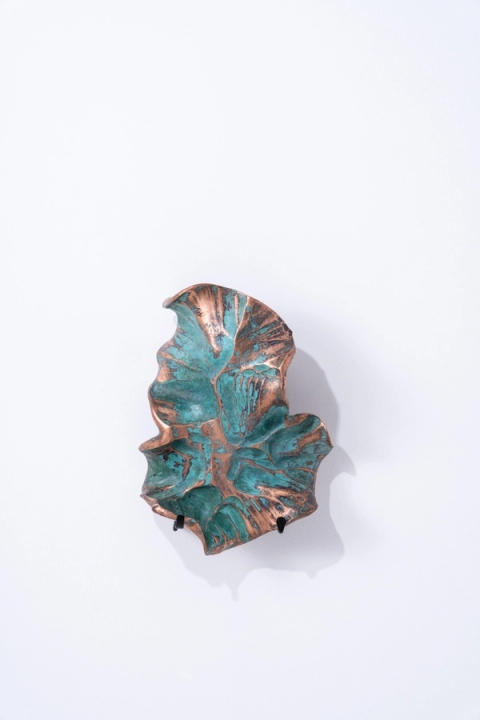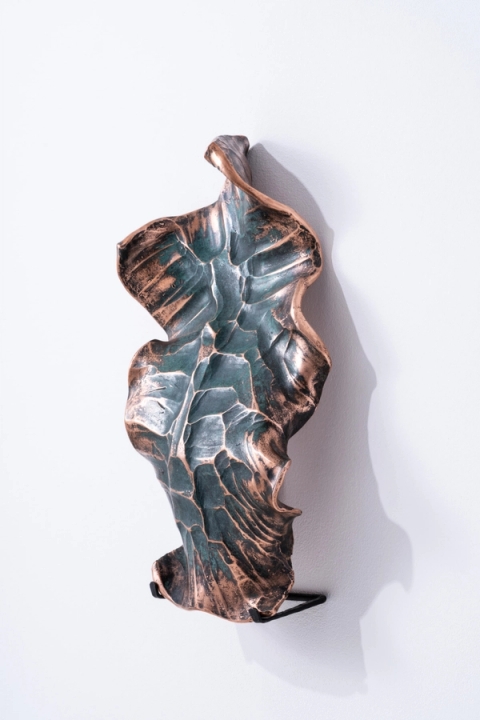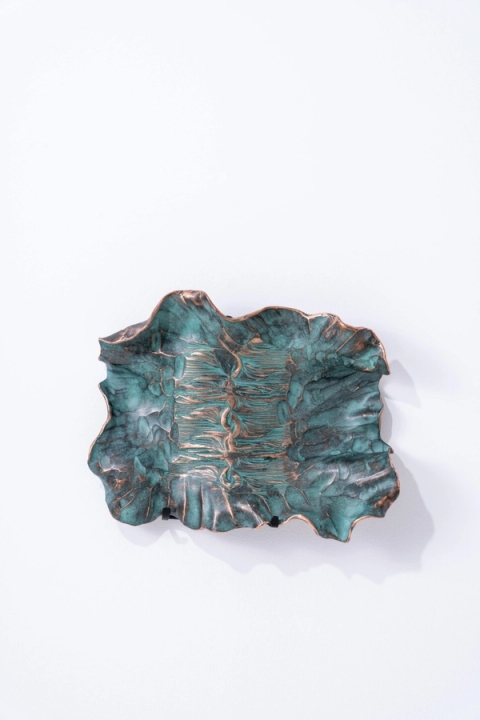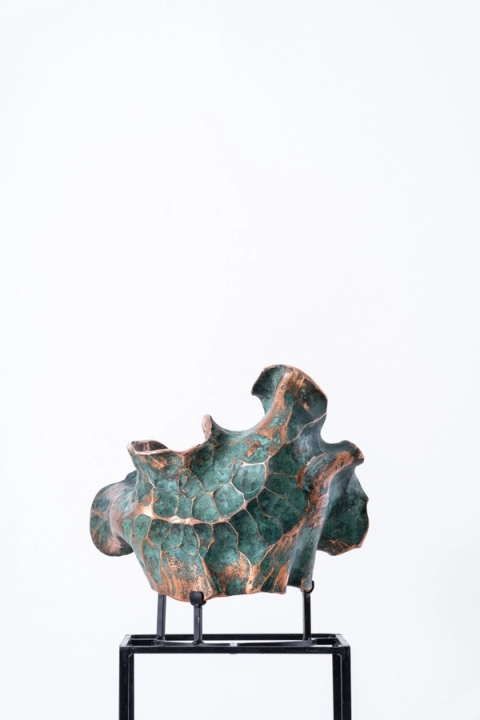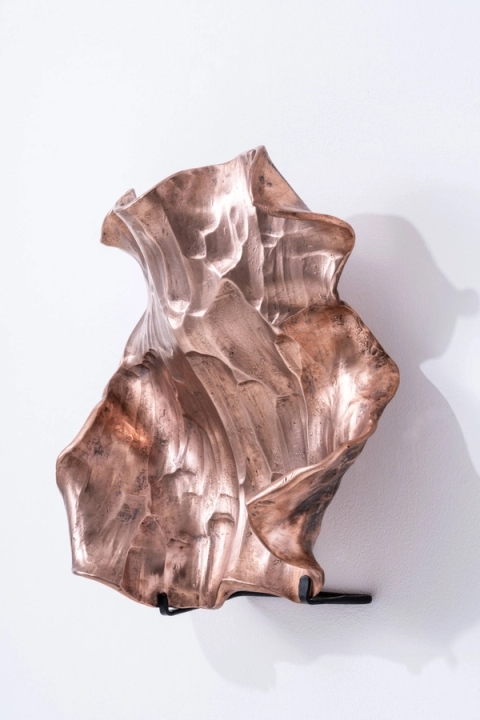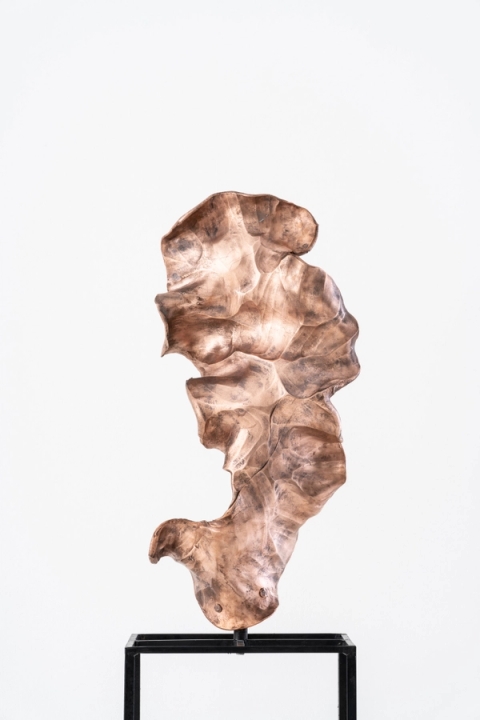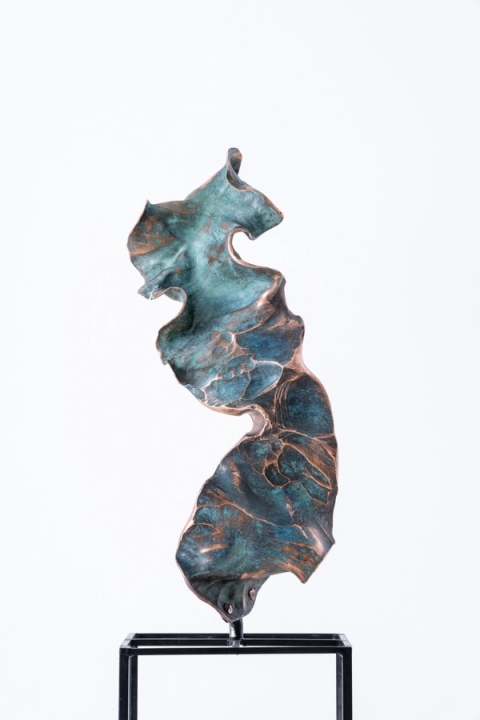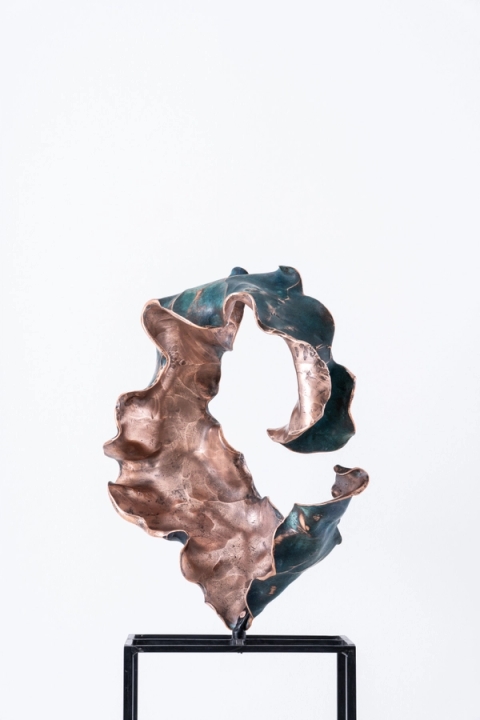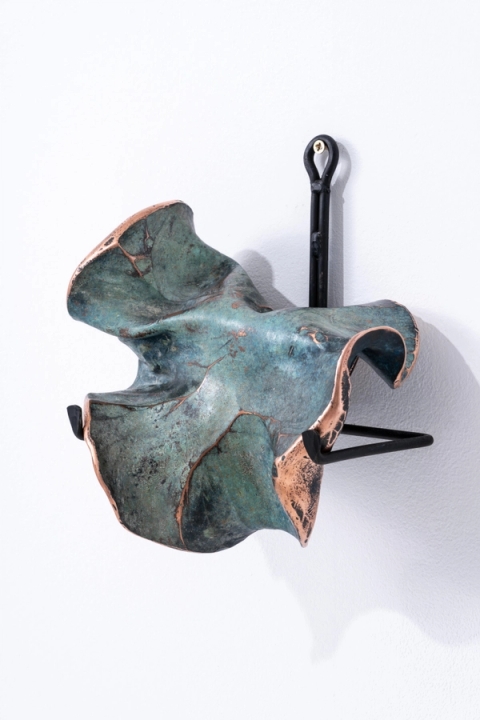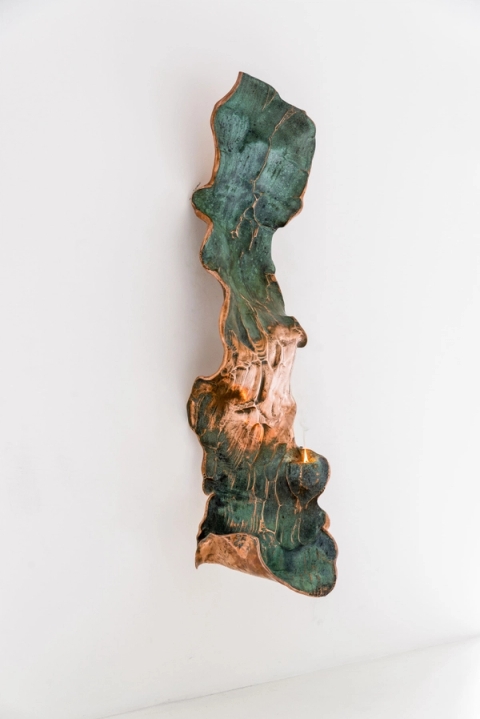My Enquiry (0)
No artwork has been selected.
Please choose an artwork to enquire.
Enquiry Submitted
Thank you for your enquiry and interest in our artists’ work. A member of the gallery team will respond shortly.
000%
11 December 2021 - 31 March 2022
Conrad Hicks’s solo presentation, Cu, contemplates the beauty found in his chosen medium: copper. Through a process of “intuitive forging”, he creates forms in metal whose primary function is to express the subconscious.
Conrad Hicks’s Cu comprises a series of curvilinear sculptures mounted to the wall and standing on plinths, all made entirely of copper (whose chemical symbol gives the exhibition its name) – in contrast to his 2019 solo, Implement, which showcased collectible furniture made from forged steel and copper.
Copper is an unusual choice of material for a blacksmith. It lacks the structural strength of steel and iron, but its malleability and lustre imbue it with great expressive potential. Copper is the oldest known metal to be used by humans (dating back to 7800 BC). In both classical mythology and alchemy, it was associated with the goddess Aphrodite owing to its beauty, ancient use in the production of mirrors and its origins in Cyprus, a place sacred to the goddess. Over the millennia, in its elemental form, it has come to be associated with femininity, fertility and love.
Hicks allows the raw material to drive the sculptural process, curving and bending organically. By reverting to a primal, instinctual art-making, similar to that of the Abstract Expressionists, he finds the metal’s form through his movement and interaction with it. For him, “beauty” is in the instinctive response to material; an evolutionary guide or rationale for all decision-making. Beauty is an abstract tool used to determine whether or not something “works” and is the driving force for past and future evolution.
Referring to art philosopher Denis Dutton’s TED Talk, “A Darwinian Theory of Beauty”, Hicks defines beauty as an exercise in aesthetic judgment and an abstract system – like maths – that exists outside of humanity. Hicks, like Dutton and Charles Darwin, believes beauty is universally understood and that a cross-cultural aesthetic resulting from the prehistoric adaptive effects of natural selection (random mutation and selective retention) drives the creation of art. Beauty is thus ‘mutated’ through elimination; responses of repulsion have evolved as a means of survival. For example, the nausea one feels at the sight or smell of rotten food (at ‘ugliness’) is a survival response.
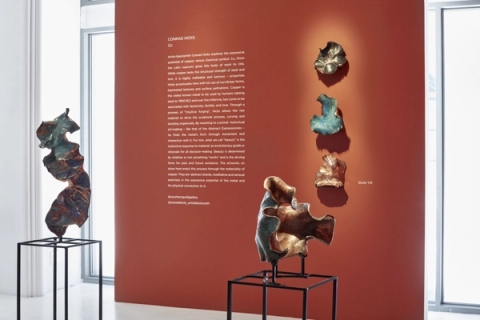
The artworks on show in Cu enact this process through the materiality of copper. They are abstract shards, meditative and sensual exercises in the expressive potential of the metal and his physical connection to it.
Heating the copper ingots up to 900 degrees he forges with a power hammer at first, allowing fluid reactions within the metal to shape the piece into curvilinear waves. He then hammers the growing form by hand on a 100-year-old anvil. The latter process brings out shapes expressed through molecular tensions and force. Here Hicks gives his subconscious free reign, allowing the hidden mind to recognise what wants to be expressed rather than controlling the metal with ego.
Attached to the power hammer is a hand-shaped die; a tool that slams against the heavy metal as it is manoeuvred by the artist. The shape of the die determines how the material is pushed and stretched. Each attachment holds idiosyncrasies and rather than hiding the tool marks, Hicks embraces the imprints as a unique fingerprint. These act like a thumb pushing into clay; becoming an extension of the artist’s own hand, allowing him to connect with the material. Even the tongs used to lift and move the copper during the hammering process leave a trace on the metal, resulting in a pure communication of the process.
The forging marks are enhanced by the various patinations that Hicks uses on the metal surface, which are then polished “as a way of showing the truth of the process”, he says. The intense greens, blues and yellows are created with the addition of cupric nitrate. Warmer hues are achieved with ferric chloride, which creates a brilliant red when mixed with an oxide. The patination process is unpredictable by nature, with different results depending on the intensity of the solution, the heat at application and the colour of the copper underneath.
With their distinctive colourings, shapes and textures, the works in Cu assume various guises; some enfold like the fabric of a cloak, others billow out like sea jellies or scuttle across one's vision like a strange reptile. A ribbon-like tendril unfurls, a bony spine pushes through the surface. Hicks’s copper offering is set free by the human capacity to both seek and find beauty.
Artists
Conrad Hicks
Works
